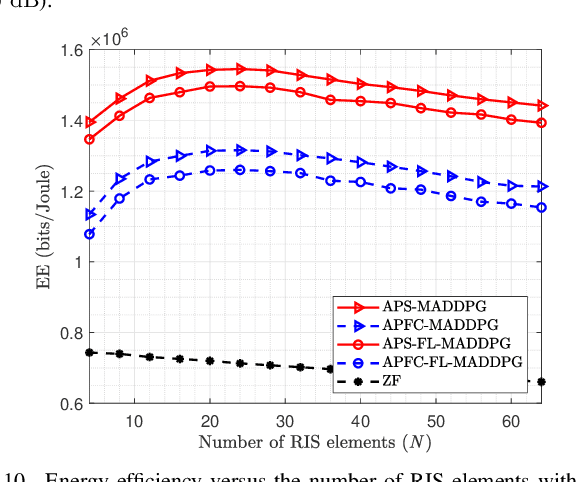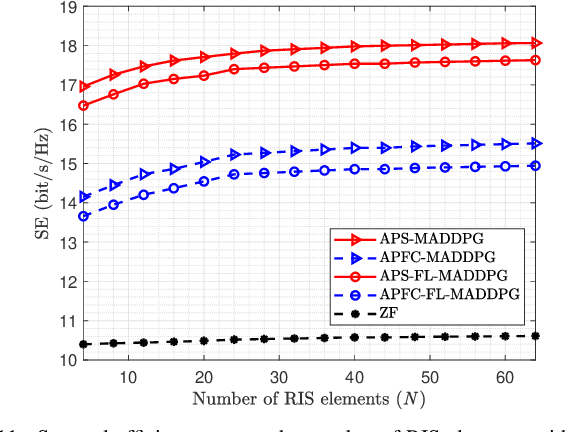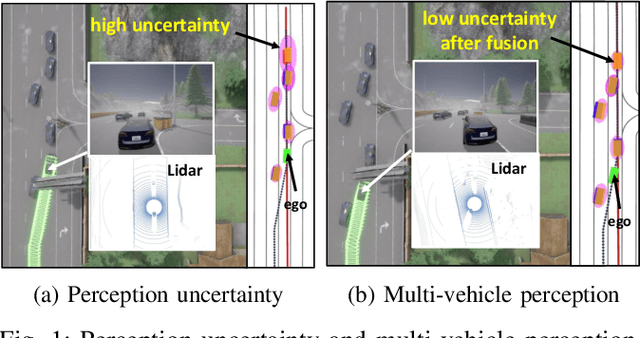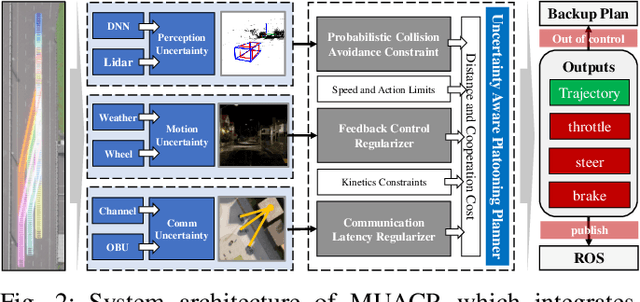Derrick Wing Kwan Ng
Sum-Rate Maximization for Pinching Antenna-assisted NOMA Systems with Multiple Dielectric Waveguides
Mar 13, 2025Abstract:This paper investigates the resource allocation design for a pinching antenna (PA)-assisted multiuser multiple-input single-output (MISO) non-orthogonal multiple access (NOMA) system featuring multiple dielectric waveguides. To enhance model accuracy, we propose a novel frequency-dependent power attenuation model for dielectric waveguides in PA-assisted systems. By jointly optimizing the precoder vector and the PA placement, we aim to maximize the system's sum-rate while accounting for the power attenuation across dielectric waveguides. The design is formulated as a non-convex optimization problem. To effectively address the problem at hand, we introduce an alternating optimization-based algorithm to obtain a suboptimal solution in polynomial time. Our results demonstrate that the proposed PA-assisted system not only significantly outperforms the conventional system but also surpasses a naive PA-assisted system that disregards power attenuation. The performance gain compared to the naive PA-assisted system becomes more pronounced at high carrier frequencies, emphasizing the importance of considering power attenuation in system design.
Multi-Cell Coordinated Beamforming for Integrate Communication and Multi-TMT Localization
Feb 25, 2025Abstract:This paper investigates integrated localization and communication in a multi-cell system and proposes a coordinated beamforming algorithm to enhance target localization accuracy while preserving communication performance. Within this integrated sensing and communication (ISAC) system, the Cramer-Rao lower bound (CRLB) is adopted to quantify the accuracy of target localization, with its closed-form expression derived for the first time. It is shown that the nuisance parameters can be disregarded without impacting the CRLB of time of arrival (TOA)-based target localization. Capitalizing on the derived CRLB, we formulate a nonconvex coordinated beamforming problem to minimize the CRLB while satisfying signal-to-interference-plus-noise ratio (SINR) constraints in communication. To facilitate the development of solution, we reformulate the original problem into a more tractable form and solve it through semi-definite programming (SDP). Notably, we show that the proposed algorithm can always obtain rank-one global optimal solutions under mild conditions. Finally, numerical results demonstrate the superiority of the proposed algorithm over benchmark algorithms and reveal the performance trade-off between localization accuracy and communication SINR.
GDM4MMIMO: Generative Diffusion Models for Massive MIMO Communications
Dec 24, 2024Abstract:Massive multiple-input multiple-output (MIMO) offers significant advantages in spectral and energy efficiencies, positioning it as a cornerstone technology of fifth-generation (5G) wireless communication systems and a promising solution for the burgeoning data demands anticipated in sixth-generation (6G) networks. In recent years, with the continuous advancement of artificial intelligence (AI), a multitude of task-oriented generative foundation models (GFMs) have emerged, achieving remarkable performance in various fields such as computer vision (CV), natural language processing (NLP), and autonomous driving. As a pioneering force, these models are driving the paradigm shift in AI towards generative AI (GenAI). Among them, the generative diffusion model (GDM), as one of state-of-the-art families of generative models, demonstrates an exceptional capability to learn implicit prior knowledge and robust generalization capabilities, thereby enhancing its versatility and effectiveness across diverse applications. In this paper, we delve into the potential applications of GDM in massive MIMO communications. Specifically, we first provide an overview of massive MIMO communication, the framework of GFMs, and the working mechanism of GDM. Following this, we discuss recent research advancements in the field and present a case study of near-field channel estimation based on GDM, demonstrating its promising potential for facilitating efficient ultra-dimensional channel statement information (CSI) acquisition in the context of massive MIMO communications. Finally, we highlight several pressing challenges in future mobile communications and identify promising research directions surrounding GDM.
Energy-Efficient RIS-Aided Cell-Free Massive MIMO Systems: Application, Opportunities, and Challenges
Dec 23, 2024



Abstract:Reconfigurable intelligent surfaces (RIS)-assisted cell-free massive multiple-input multiple-output (CF mMIMO) systems have emerged as a promising technology for sixth-generation communication systems. These systems capitalize on RIS to minimize power consumption, thereby achieving consistent performance and enhancing communication quality through the establishment and shaping of auxiliary signal propagation pathways between access points (APs) and users. However, integrating RIS into existing CF mMIMO infrastructures presents several technical challenges. This study delves into the signal transmission scheme and deployment architecture of RIS-aided CF mMIMO systems, addressing inherent challenges such as interference induced by RIS and the increased complexity in beam alignment. Furthermore, we address the complexities arising from the joint optimization of the reflection phase of RIS and beamforming technology at the APs, intending to fully exploit the reflection capabilities of RISs and beamforming technology to maximize the energy efficiency (EE) of the system. To overcome these challenges, we propose cooperation communication to suppress RIS-induced interference, beam tracking, and joint optimization to improve system EE. We also present specific examples of cooperative communication under the constraint of electromagnetic interference and the beam tracking of a mobile system. Additionally, we emphasize important research directions for RIS-aided CF mMIMO systems, aiming to inspire future investigations.
Unveiling the Potential of NOMA: A Journey to Next Generation Multiple Access
Dec 22, 2024Abstract:Revolutionary sixth-generation wireless communications technologies and applications, notably digital twin networks (DTN), connected autonomous vehicles (CAVs), space-air-ground integrated networks (SAGINs), zero-touch networks, industry 5.0, and healthcare 5.0, are driving next-generation wireless networks (NGWNs). These technologies generate massive data, requiring swift transmission and trillions of device connections, fueling the need for sophisticated next-generation multiple access (NGMA) schemes. NGMA enables massive connectivity in the 6G era, optimizing NGWN operations beyond current multiple access (MA) schemes. This survey showcases non-orthogonal multiple access (NOMA) as NGMA's frontrunner, exploring What has NOMA delivered?, What is NOMA providing?, and What lies ahead?. We present NOMA variants, fundamental operations, and applicability in multi-antenna systems, machine learning, reconfigurable intelligent surfaces (RIS), cognitive radio networks (CRN), integrated sensing and communications (ISAC), terahertz networks, and unmanned aerial vehicles (UAVs). Additionally, we explore NOMA's interplay with state-of-the-art wireless technologies, highlighting its advantages and technical challenges. Finally, we unveil NOMA research trends in the 6G era and provide design recommendations and future perspectives for NOMA as the leading NGMA solution for NGWNs.
Deep Learning Based Near-Field User Localization with Beam Squint in Wideband XL-MIMO Systems
Dec 02, 2024



Abstract:Extremely large-scale multiple-input multiple-output (XL-MIMO) is gaining attention as a prominent technology for enabling the sixth-generation (6G) wireless networks. However, the vast antenna array and the huge bandwidth introduce a non-negligible beam squint effect, causing beams of different frequencies to focus at different locations. One approach to cope with this is to employ true-time-delay lines (TTDs)-based beamforming to control the range and trajectory of near-field beam squint, known as the near-field controllable beam squint (CBS) effect. In this paper, we investigate the user localization in near-field wideband XL-MIMO systems under the beam squint effect and spatial non-stationary properties. Firstly, we derive the expressions for Cram\'er-Rao Bounds (CRBs) for characterizing the performance of estimating both angle and distance. This analysis aims to assess the potential of leveraging CBS for precise user localization. Secondly, a user localization scheme combining CBS and beam training is proposed. Specifically, we organize multiple subcarriers into groups, directing beams from different groups to distinct angles or distances through the CBS to obtain the estimates of users' angles and distances. Furthermore, we design a user localization scheme based on a convolutional neural network model, namely ConvNeXt. This scheme utilizes the inputs and outputs of the CBS-based scheme to generate high-precision estimates of angle and distance. More importantly, our proposed ConvNeXt-based user localization scheme achieves centimeter-level accuracy in localization estimates.
Joint Precoding and AP Selection for Energy Efficient RIS-aided Cell-Free Massive MIMO Using Multi-agent Reinforcement Learning
Nov 17, 2024



Abstract:Cell-free (CF) massive multiple-input multiple-output (mMIMO) and reconfigurable intelligent surface (RIS) are two advanced transceiver technologies for realizing future sixth-generation (6G) networks. In this paper, we investigate the joint precoding and access point (AP) selection for energy efficient RIS-aided CF mMIMO system. To address the associated computational complexity and communication power consumption, we advocate for user-centric dynamic networks in which each user is served by a subset of APs rather than by all of them. Based on the user-centric network, we formulate a joint precoding and AP selection problem to maximize the energy efficiency (EE) of the considered system. To solve this complex nonconvex problem, we propose an innovative double-layer multi-agent reinforcement learning (MARL)-based scheme. Moreover, we propose an adaptive power threshold-based AP selection scheme to further enhance the EE of the considered system. To reduce the computational complexity of the RIS-aided CF mMIMO system, we introduce a fuzzy logic (FL) strategy into the MARL scheme to accelerate convergence. The simulation results show that the proposed FL-based MARL cooperative architecture effectively improves EE performance, offering a 85\% enhancement over the zero-forcing (ZF) method, and achieves faster convergence speed compared with MARL. It is important to note that increasing the transmission power of the APs or the number of RIS elements can effectively enhance the spectral efficiency (SE) performance, which also leads to an increase in power consumption, resulting in a non-trivial trade-off between the quality of service and EE performance.
Secrecy Energy Efficiency Maximization in IRS-Assisted VLC MISO Networks with RSMA: A DS-PPO approach
Nov 14, 2024



Abstract:This paper investigates intelligent reflecting surface (IRS)-assisted multiple-input single-output (MISO) visible light communication (VLC) networks utilizing the rate-splitting multiple access (RSMA) scheme. {In these networks,} an eavesdropper (Eve) attempts to eavesdrop on communications intended for legitimate users (LUs). To enhance information security and energy efficiency simultaneously, we formulate a secrecy energy efficiency (SEE) maximization problem. In the formulated problem, beamforming vectors, RSMA common rates, direct current (DC) bias, and IRS alignment matrices are jointly optimized subject to constraints on total power budget, quality of service (QoS) requirements, linear operating region of light emitting diodes (LEDs), and common information rate allocation. Due to the non-convex and NP-hard nature of the formulated problem, we propose a deep reinforcement learning (DRL)-based dual-sampling proximal policy optimization (DS-PPO) approach. {The approach leverages} dual sample strategies and generalized advantage estimation (GAE). In addition, to further simplify the design, we adopt the maximum ratio transmission (MRT) and zero-forcing (ZF) as beamforming vectors in the action space. Simulation results show that the proposed DS-PPO approach outperforms traditional baseline approaches in terms of achievable SEE and significantly improves convergence speed compared to the original PPO approach. Moreover, implementing the RSMA scheme and IRS contributes to overall system performance, {achieving approximately $19.67\%$ improvement over traditional multiple access schemes and $25.74\%$ improvement over networks without IRS deployment.
An Overview on IRS-Enabled Sensing and Communications for 6G: Architectures, Fundamental Limits, and Joint Beamforming Designs
Nov 11, 2024



Abstract:This paper presents an overview on intelligent reflecting surface (IRS)-enabled sensing and communication for the forthcoming sixth-generation (6G) wireless networks, in which IRSs are strategically deployed to proactively reconfigure wireless environments to improve both sensing and communication (S&C) performance. First, we exploit a single IRS to enable wireless sensing in the base station's (BS's) non-line-of-sight (NLoS) area. In particular, we present three IRS-enabled NLoS target sensing architectures with fully-passive, semi-passive, and active IRSs, respectively. We compare their pros and cons by analyzing the fundamental sensing performance limits for target detection and parameter estimation. Next, we consider a single IRS to facilitate integrated sensing and communication (ISAC), in which the transmit signals at the BS are used for achieving both S&C functionalities, aided by the IRS through reflective beamforming. We present joint transmit signal and receiver processing designs for realizing efficient ISAC, and jointly optimize the transmit beamforming at the BS and reflective beamforming at the IRS to balance the fundamental performance tradeoff between S&C. Furthermore, we discuss multi-IRS networked ISAC, by particularly focusing on multi-IRS-enabled multi-link ISAC, multi-region ISAC, and ISAC signal routing, respectively. Finally, we highlight various promising research topics in this area to motivate future work.
Multi-Uncertainty Aware Autonomous Cooperative Planning
Nov 01, 2024



Abstract:Autonomous cooperative planning (ACP) is a promising technique to improve the efficiency and safety of multi-vehicle interactions for future intelligent transportation systems. However, realizing robust ACP is a challenge due to the aggregation of perception, motion, and communication uncertainties. This paper proposes a novel multi-uncertainty aware ACP (MUACP) framework that simultaneously accounts for multiple types of uncertainties via regularized cooperative model predictive control (RC-MPC). The regularizers and constraints for perception, motion, and communication are constructed according to the confidence levels, weather conditions, and outage probabilities, respectively. The effectiveness of the proposed method is evaluated in the Car Learning to Act (CARLA) simulation platform. Results demonstrate that the proposed MUACP efficiently performs cooperative formation in real time and outperforms other benchmark approaches in various scenarios under imperfect knowledge of the environment.
 Add to Chrome
Add to Chrome Add to Firefox
Add to Firefox Add to Edge
Add to Edge